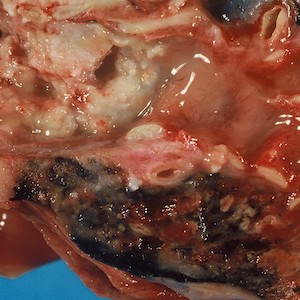Can serum progranulin level be used as a prognostic biomarker in non-small cell lung cancer?

All claims expressed in this article are solely those of the authors and do not necessarily represent those of their affiliated organizations, or those of the publisher, the editors and the reviewers. Any product that may be evaluated in this article or claim that may be made by its manufacturer is not guaranteed or endorsed by the publisher.
Accepted: 8 November 2022
Authors
Progranulin has been considered to be a poor prognostic biomarker for some types of malignancies. However, the clinical significance of serum progranulin level and the prognostic value are still not explored in advanced stages of lung cancer. The current study investigates the prognostic significance of progranulin serum levels in advanced-stage non-small cell lung cancer (NSCLC) patients. This study involved 94 subjects (70 advanced-stage NSCLC patients and 24 healthy controls). Serum progranulin level was measured by enzyme-linked immunosorbent assay (ELISA) and was correlated with patient outcome. The association between circulating progranulin level and clinicopathological parameters was detected. Serum progranulin cut-off level predicting six-month survival was determined. Serum progranulin level was found significantly elevated in NSCLC patients than in the control group (p<0.001). We did not determine a significant difference between stage IIIB and stage IV NSCLC patients for serum progranulin levels (p=0.166). When we evaluated the laboratory parameters, only serum LDH level was found significantly correlated with serum progranulin level (p=0.043), also bone and liver metastasis showed a significant correlation with progranulin level (p=0.008 and p = 0.024, respectively). The cut-off level of serum progranulin in predicting six months of survival was determined as 16.03 ng/ml (AUC = 0.973, 95%Cl: 0.903-0.997, p<0.001) with 97.06% sensitivity and 88.89% specificity. Overall survival was determined shorter in patients with progranulin level ≥16 ng/ml than those with <16 ng/ml (p<0.001). Also, in the multivariate analysis using the Cox regression model serum progranulin level was found as an independent prognostic factor for NSCLC (p=0.001). Serum progranulin level may be a useful biomarker for predicting poor survival in advanced-stage NSCLC patients.
How to Cite

This work is licensed under a Creative Commons Attribution-NonCommercial 4.0 International License.






